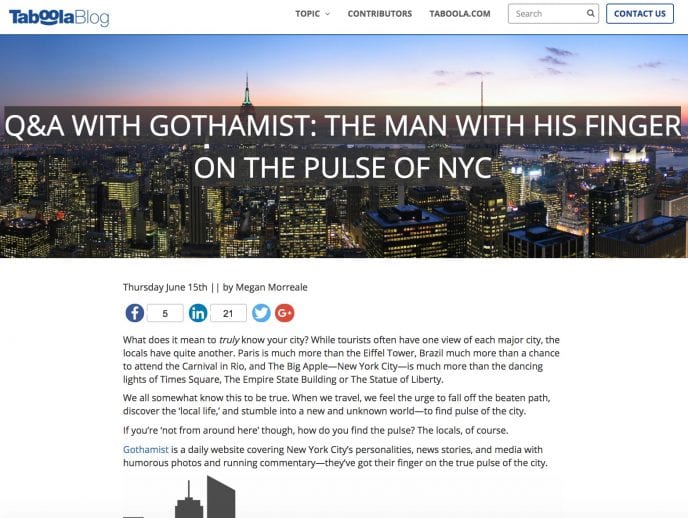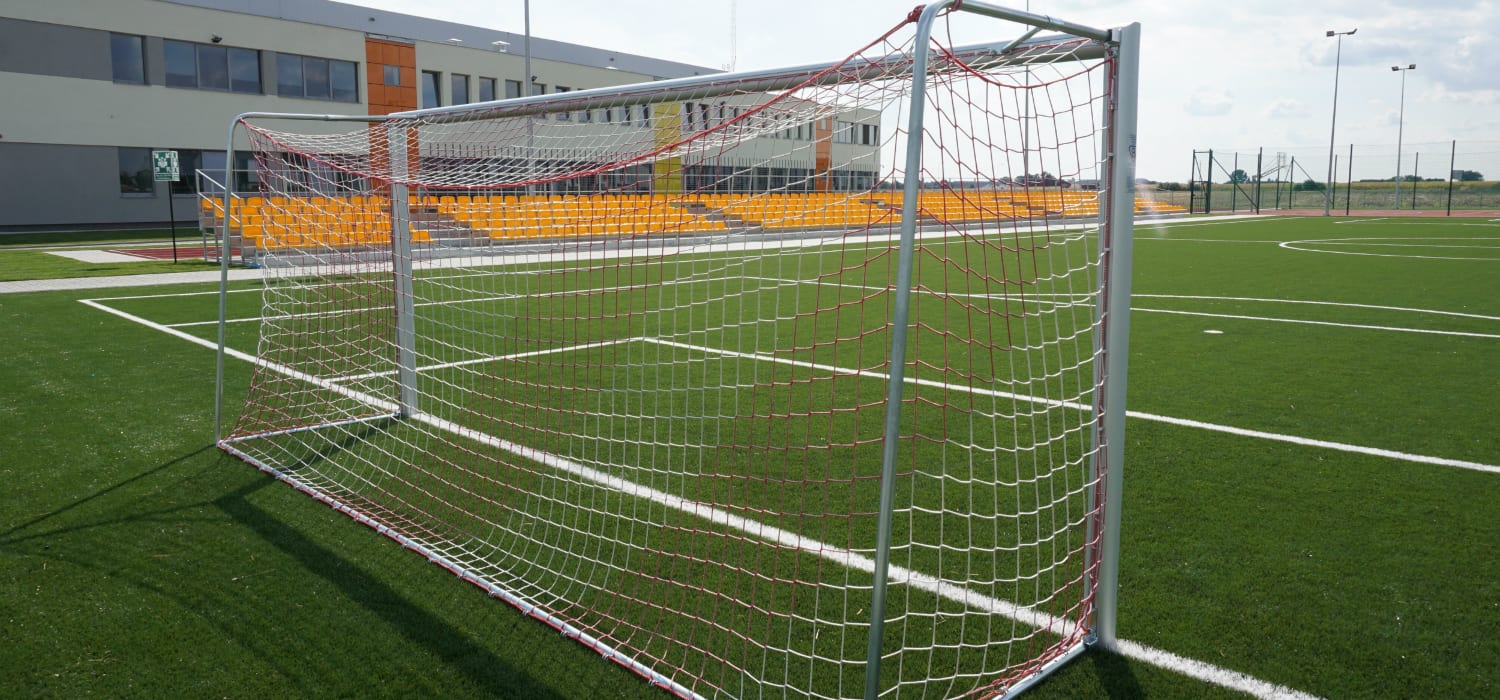An effective content strategy is founded on a wide variety of content. Brands produce videos, infographics, sales collateral, press releases and content for landing pages; and then, of course, your content discovery placements and social media creatives to distribute it all.
Then, there’s my personal favorite—editorial content. Often written in the form of blog posts, guest posts and executive bylines, editorial content is a great way to educate your customers, build a trusting relationship, and engage with them.
The thing about engaging editorial content is that it’s great for two goals brands often have: brand awareness and lead generation. Unless your content is built to be engaging, you won’t achieve either.
If you’re pitching a byline or a guest post, you have less control over the user experience (UX). If you’re hosting your content on a landing page, or within your own editorial brand environments, such as a branded magazine or blog, you have the ability to ensure your editorial content is working the hardest it can for you—and trust me, the UX of your editorial content can have a huge impact:
- According to CNET, a simple change in link color on Bing led to an additional $80 million dollars in revenue.
- Poynter reported that Time.com’s bounce rate dropped by 15% after they implemented infinite scroll.
- Finally, Business Insider reported that you’re more likely to survive a plane crash or win the lottery than click on a banner ad.
I sat down with Taboola Creative Strategy expert Sean Surdovel to discuss the UX of the editorial content that drives the most engagement for our client brands. You’ve spent the energy crafting the perfect editorial content—here’s how to set it up so your audience takes the action you’re looking for.
Step 1: When you write; inform first, sell second.
Me: First, the obvious question before we get into UX. If you want to encourage your audience to engage with your brand, what should you write about?
Sean: “The biggest rule we tell our clients is to inform first and sell second. Users that are arriving on your page through content discovery are probably discovering you for the first time—it’s not the time for a hard sell.
“We see the best performance between 400 and 600 words for B2C content. B2B content can be longer because content consumption becomes a productive task if it’s benefitting your business. The real trick though is to be innovative. Videos, photo galleries, and quizzes have the potential to unlock whole new audiences for a product, and brands should experiment with them.
“We see the best performance between 400 and 600 words for B2C content.” – Sean Surdovel, Creative Strategy
“Whatever the topic, you need to be precise about what it is you want from the audience. A visitor won’t buy into your brand if they don’t know who you are or why they should.”
Step 2: Keep the page clean, and stick with black and white.
Me: What’s the best way to keep your audience focused on the actions you want them to take?
Sean: “Keep the page clean. Extraneous clutter on either side of your content or in the navigation bar is distracting. Most content consumption happens when users are between more planned tasks, so chances are they aren’t giving you their full attention—a clean user experience is one of the most important things you can do to keep them engaged.
“A simple black font on a white background is best. I’ve seen a lot of sites that try to break this rule, but in this case, traditional works.
“Also keep in mind that your content should be easy to skim. Editorial design should include an easy to understand header structure, stand alone block quotes, images that ‘pop,’ and easily identifiable links, so a visitor can tell immediately whether or not a piece of content is for them.”
Step 3: Cut off an image at the fold, so people scroll.
Me: Once you have a visitor in your environment, how do you keep them for longer?
Sean: “A visitor probably won’t stay long if you don’t get them to scroll. You can get people to scroll by making it clear that there is more compelling content further down the page.
“Adding images at the beginning or midway through the article goes a long way in making editorial content inviting.” – Surdovel
“You can do this by cutting off an image at the fold. We do this because our brains automatically seek to complete incomplete imagery. The user wants to complete the image that’s cut off, and consume your content in the process.
“Adding images at the beginning or midway through the article goes a long way in making editorial content inviting—just don’t let an image take up the entire width of a page, as this will indicate to them that they should stop scrolling.”
Step 4: Make navigation easy so readers don’t get annoyed.
Me: What’s the number one way you can annoy a reader, and ensure they inevitably leave?
Sean: “If it’s unclear how to navigate your page, a reader will leave. It has to be crystal clear how they should interact with your content, and where they should go next. For example, if you have a pop-out gallery in your content, make sure that gallery loads quickly, is super easy to navigate and to close.
“Users will instinctively close pop-ups without reading them. If you need to rely on a pop-up then make sure it’s triggered only once a user has engaged with your page.” – Surdovel
“Same goes for calls to action (CTAs). If you any type of disruptive CTA, and it’s not immediately clear to a person who’s not interested how to close it, they’re going to leave your site. Users will instinctively close pop-ups without reading them. If you need to rely on a pop-up then make sure it’s triggered only once a user has engaged with your page.
“Bolded sub-headers, relatively big fonts and short paragraphs also make a page easy to navigate and be careful with your links. If you need to link outside of your site, make sure that link opens in a new tab.”
Step 5: Write a CTA that is crystal clear, with one goal.
Me: So, now for what we really all want to know, how do I write the perfect CTA for a piece of editorial content?
Sean: “You’re telling a user why they should take an action in a simple way, so give them an incentive. If they’re signing up for a newsletter, give them a piece of gated content for free. If they’re making a purchase, give them a discount or some other added value.
“But most importantly, pick ONE action. Too many options will overwhelm the reader—tell them exactly what to expect after they click. Action language like “buy,” or “sign-up” is clear to a visitor.”
Step 6: Engaging CTAs, like quizzes, really work.
Me: Where is the best place to put a CTA on an article page, and what should it look like?
Sean: “If brands haven’t already, I like to suggest adding a less aggressive CTA about a third of the way down your page. Hyperlinked text in a separate row can work well for this. You should also place one immediately below the article body, so when a person is finished reading, they have an immediate next step. This is especially the most effective place when using Taboola. In most cases, our users find your content at the end of the article, so it makes sense that’s where they’ll engage with your CTA there, too.
“You should also place a CTA immediately below the article body, so when a person is finished reading, they have an immediate next step.” – Surdovel
“If you can make it a game—bonus points. We’ve consistently seen that CTAs in quiz format will make the user more likely to follow through with an action.
“There are a couple of don’ts I’d like to share, and the first is do NOT make your CTA look like a banner. Banner blindness is real, and users will ignore it. Even separating your CTA from the article with a block of background color will have the same effect.
“Also, stay away from the right rail on desktop—users are engaging with your article and will miss it there. Same goes for pairing CTAs with share buttons or comments. Brands shouldn’t just rely on a floating CTA in the footer, which is pretty common. Users will most likely miss it if it appears as part of the window instead of as part of the content.”
There’s a lot that goes into a good CTA—the message, the placement, and the design all have an impact, and all should be tested for success based on your personal brand.
One thing emerged from my interview with Sean above all else—while these are great standard practices to follow, for which we’ve seen a lot of client success, you need to test your success on your own.
Every audience is different, and A/B testing major elements of your page on a regular basis will ensure that your editorial content is reaching its maximum potential. You can also check out our creative strategy team’s best practices for creatives on our network, landing pages, app marketing and eCommerce brands.
Taboola is the world’s leading content discovery platform, serving 360B recommendations to over 1B unique visitors each month on the web’s most innovative publisher sites. To learn more about how Taboola can help you, contact us or start your campaign today.


